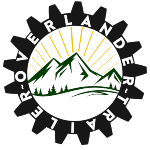Insulating a DIY camper is an important step to ensure comfort and energy efficiency. To achieve the best results, there are certain mistakes and pitfalls you should avoid. Here are some things to steer clear of when insulating your DIY camper:
- Inadequate Sealing:
- Failing to properly seal gaps, seams, and openings can lead to drafts, air leakage, and reduced insulation effectiveness. Ensure all joints are well-sealed to prevent heat loss and moisture infiltration.
- Overlooking Moisture Management:
- Ignoring moisture issues can lead to mold, mildew, and rot. Use materials with good moisture resistance and consider adding vapor barriers and proper ventilation to prevent condensation.
- Using the Wrong Insulation Type:
- Selecting an insulation material that doesn’t suit your climate, space constraints, or other requirements can result in poor thermal performance, wasted space, or inadequate protection against the elements.
- Ignoring R-Value Requirements:
- Choosing insulation with inadequate R-values for your climate can result in poor temperature regulation and discomfort in extreme weather conditions.
- Insufficient or Uneven Coverage:
- Improperly installed insulation or gaps in insulation coverage can create cold spots and reduce overall efficiency.
- Blocking Vents and Air Flow:
- Covering or blocking vents with insulation can lead to inadequate airflow, causing condensation and compromising air quality within the camper.
- Using the Wrong Adhesives:
- Using incorrect adhesives or tapes for insulation installation can result in poor adhesion, reduced insulation performance, and potential deterioration over time.
- Neglecting Fire Safety:
- Ignoring fire safety can have serious consequences. Make sure your chosen insulation material meets fire safety standards, especially if you’ll be using heating sources inside the camper.
- Neglecting Weight Considerations:
- Adding too much insulation can significantly increase the weight of your camper, affecting towing capacity, fuel efficiency, and handling.
- Skipping Proper Ventilation:
- Inadequate ventilation can lead to poor air quality and moisture buildup within the camper. Plan for proper ventilation to maintain a healthy indoor environment.
- Forgetting About Finish and Aesthetics:
- Insulation materials might require additional finishing touches to create a comfortable and visually pleasing interior. Plan for appropriate paneling or wall coverings.
- Ignoring Environmental Impact:
- Choosing insulation materials with high environmental impact or not properly disposing of waste materials can harm the environment and contribute to pollution.
- Rushing the Process:
- Hasty installation can result in mistakes and decreased insulation effectiveness. Take your time and follow manufacturer guidelines.
- Not Testing and Prototyping:
- Skipping small-scale testing or prototyping can lead to unexpected issues once you start insulating the entire camper.
- Ignoring Local Regulations:
- Not researching local building codes and regulations related to insulation materials and installation can lead to legal and safety issues.
Proper insulation is essential for creating a comfortable and energy-efficient living space in your DIY camper. Avoiding these common mistakes and being thorough in your research and planning will help ensure a successful insulation project.
